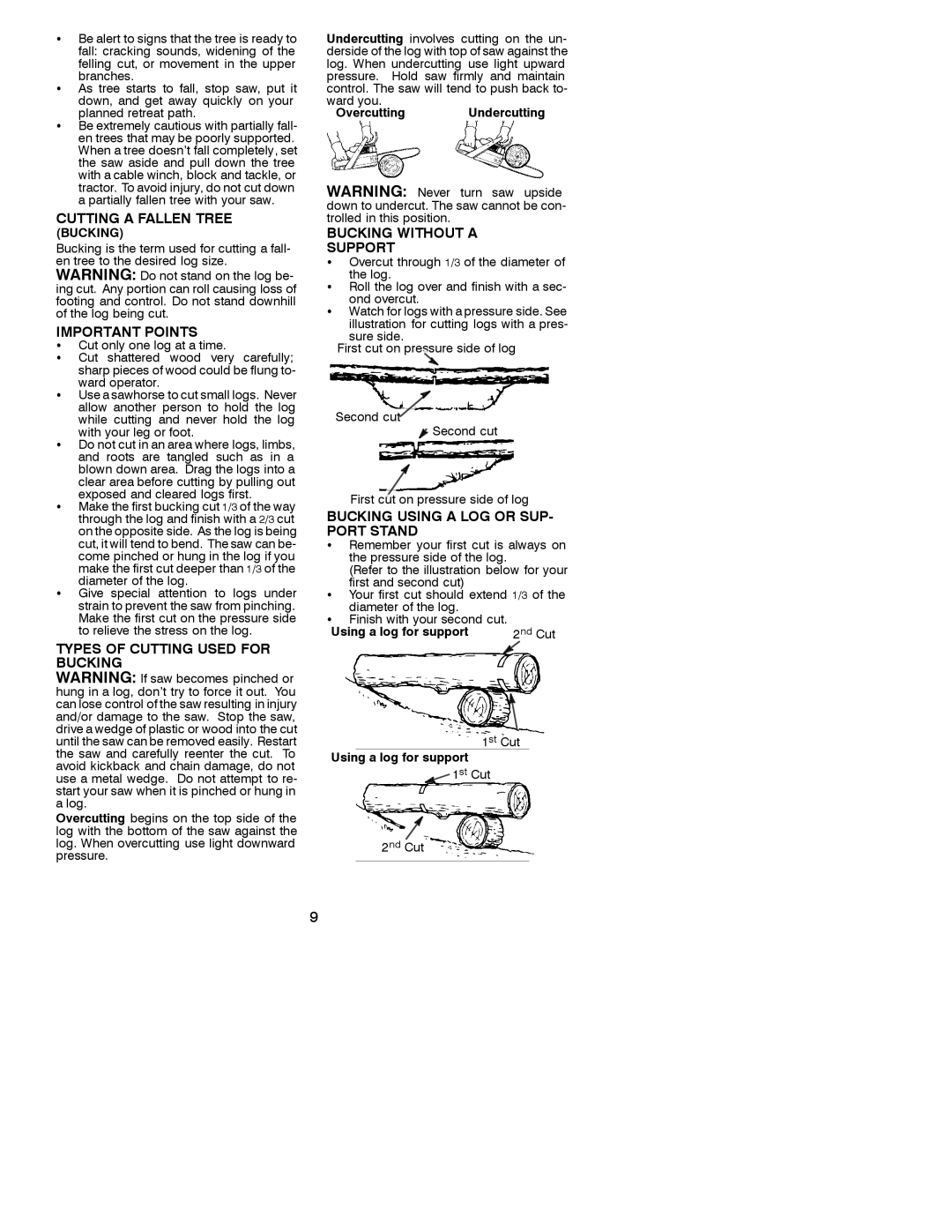530087857 specifications
The Poulan 530087857 is a standout product in the realm of outdoor power equipment, particularly designed for those who seek reliability and efficiency in their lawn care routine. This model incorporates advanced features and robust technologies that make lawn maintenance a breeze, whether you are a professional landscaper or a dedicated homeowner.One of the key features of the Poulan 530087857 is its powerful engine, which is engineered to provide high performance and consistent power delivery. The engine is built with a focus on fuel efficiency, allowing users to complete their tasks without frequent refueling interruptions. This not only saves time but also enhances productivity, making it an essential tool for larger lawns and gardens.
The ergonomic design of the Poulan 530087857 ensures comfort during operation. Its lightweight frame and balanced construction reduce fatigue, ensuring that users can maneuver the equipment with ease. The handles are designed for optimal grip, featuring anti-vibration technology that minimizes discomfort during extended use. This allows for longer working sessions without compromising on comfort.
One of the standout technologies integrated into the Poulan 530087857 is its easy-start mechanism. This innovation eliminates the hassle often associated with starting outdoor power equipment, providing users with a hassle-free experience. Combined with a reliable ignition system, this feature ensures that the machine starts promptly every time, saving time and frustration.
The Poulan 530087857 also boasts a user-friendly interface, making it accessible to individuals of all experience levels. Clear controls and indicators allow for easy adjustments, enabling users to customize their cutting experience based on the specific needs of their lawns.
Moreover, this model is designed with durability in mind. Constructed from high-quality materials, the Poulan 530087857 can withstand the rigors of outdoor use. Its components are engineered to resist wear and tear, ensuring longevity and minimizing the need for frequent maintenance.
Finally, the Poulan 530087857 is an environmentally-conscious choice. The engine meets stringent emissions regulations, contributing to a cleaner environment while delivering the performance users expect.
In summary, the Poulan 530087857 combines power, comfort, and advanced technology to create an exceptional outdoor tool that meets the needs of any lawn care enthusiast. Whether you're tackling tough overgrowth or maintaining a manicured lawn, the Poulan 530087857 is engineered to deliver results with ease and efficiency.

